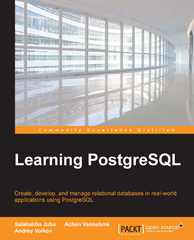Answered step by step
Verified Expert Solution
Question
1 Approved Answer
Systems and Database Design Assignment 1 : Normalisation and E - R Modelling Assignment Marks: Not Applicable, Exemplar Only ( normally worth 2 0 %
Systems and Database Design
Assignment : Normalisation and ER Modelling
Assignment Marks: Not Applicable, Exemplar Only normally worth of unit
Due Date: Not Applicable, Exemplar Only normally due at start of week
Background Information
This assignment tests your knowledge and understanding of the two database design techniques we
have covered in this unit Normalisation and EntityRelationship Modelling. Both techniques aim to
identify and organise a set of data in an efficient manner that minimises redundancy and establishes
the structure of related groups of data. These are important first steps in constructing databases.
The assignment consists of four tasks, focusing on normalisation and entityrelationship modelling.
Attempt all questions, and be sure to show all relevant stagesworking and state any assumptions.
The presentation of your solutionsdocument and use of correct notation is taken into consideration.
A Note Regarding Assumptions
It is not possible to define every single aspect of all systems in the assignment brief, nor is it beneficial
to attempt this. Part of the process of completing the assignment tasks is making and declaring
assumptions that define any ambiguous or unspecified details in the scenarios. It is up to you to make
these assumptions, but feel free to discuss them with your tutor if you are uncertain of their validity.
The tutorial of Module recording available on unit site discusses assumptions.
There is no universally correct set of assumptions for the tasks. Think about the problem, and make
assumptions as you encounter the need for them. All assumptions should affect or be
enforcedimplemented by your database design, and they should not contradict something that is
specified in the assignment brief. Your assumptions are unlikely to have a major impact upon the task
or the resulting database structure if they do seek advice from your tutor.
The most common assumptions are likely to regard identifying irrelevant or derived data Tasks and
or the cardinality of relationships between entities all tasks Some assumptions may make a task
easier, but avoid always making assumptions that make the task easier, as this is a questionable
practise and is likely result in a solutions that do not demonstrate a deep understanding. Always
remember to clearly state all assumptions you make.
Exemplar CSG Assignment Page
Task Normalisation marks
The table below shows part of a spreadsheet used to keep track of student enrolment in units.
Student Number Student Name Unit Code Unit Name
Eric Cartman CSG Systems & Database Design
Eric Cartman CSI Application Development
Stan Marsh CSI Application Development
Kyle Broflowski CSG Systems & Database Design
Kyle Broflowski CSI Application Development
A student can be enrolled in many units and a unit can have many students enrolled in it
Normalise this data to the third normal form, clearly showing the stages of NFNFNF and NF
State any assumptions you make. Use relational symbolic notation as indicated in the second lecture,
and name your resultant data sets upon reaching NF
Take heed of the following tips and reminders:
There are several valid ways to normalise this data, leading to almost identical solutions.
This scenario only allows for one repeating group, ie ROuter Group Repeating Group
Not all groups of logically related attributes will begin in its own repeating group, eg
A repeating group may contain attributes that will later be split into different relations.
Include a physical ER diagram of your normalised results. Remember to state any assumptions
regarding the cardinality of the relationships in the diagram.
Step by Step Solution
There are 3 Steps involved in it
Step: 1

Get Instant Access to Expert-Tailored Solutions
See step-by-step solutions with expert insights and AI powered tools for academic success
Step: 2

Step: 3

Ace Your Homework with AI
Get the answers you need in no time with our AI-driven, step-by-step assistance
Get Started


